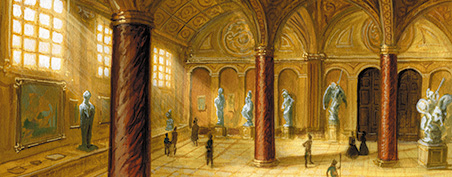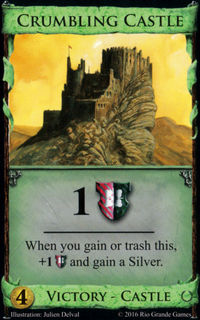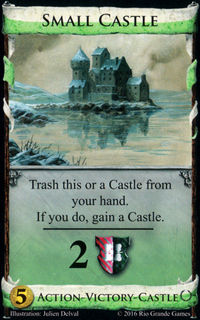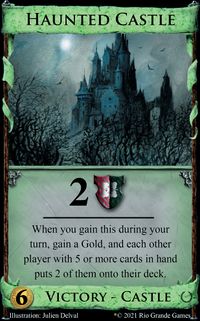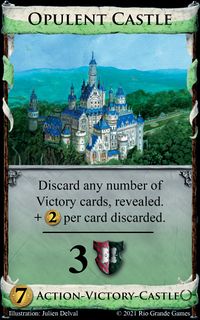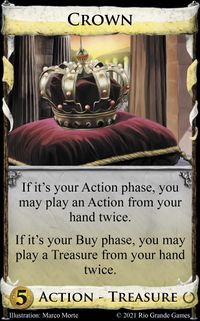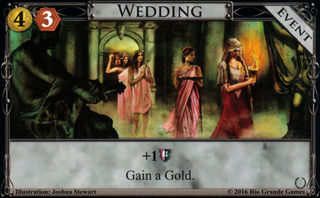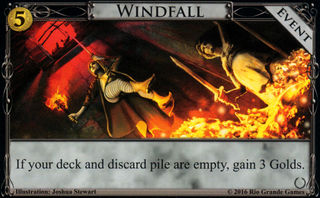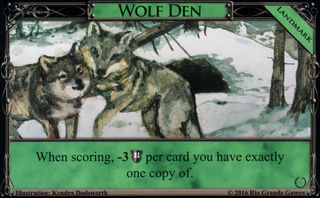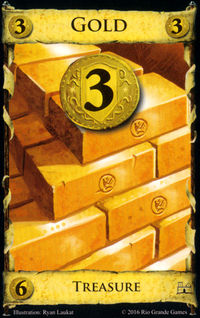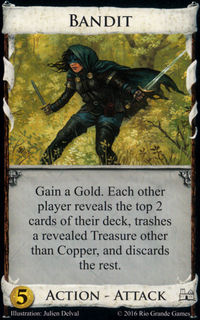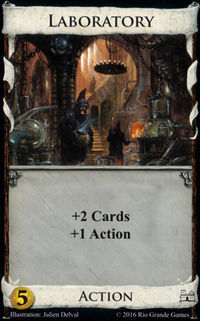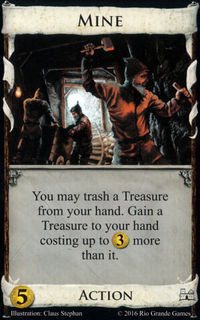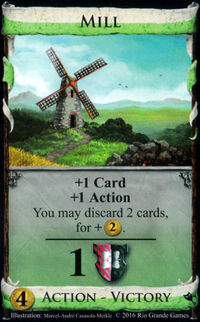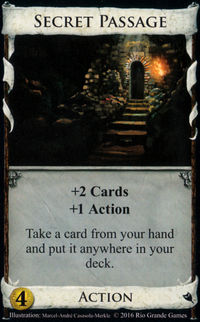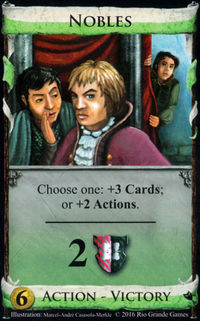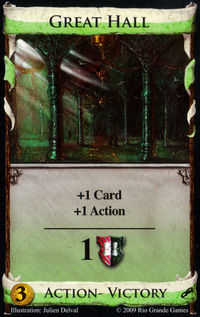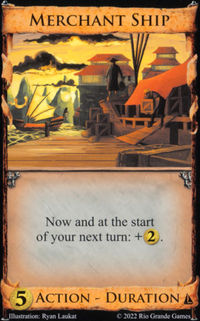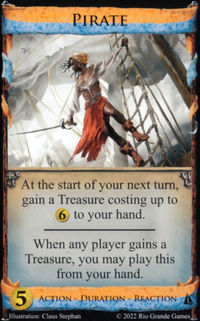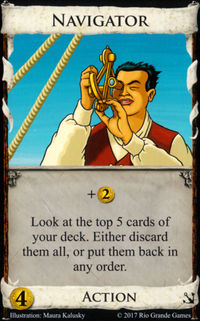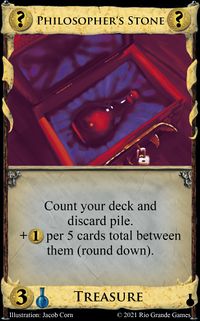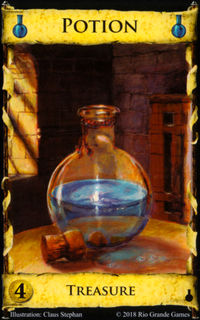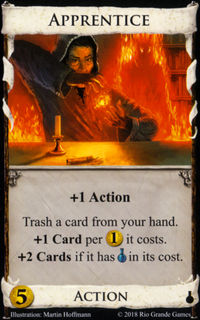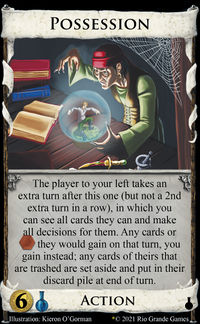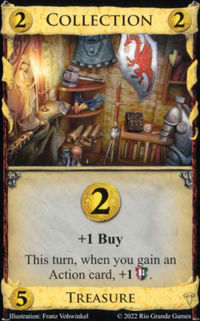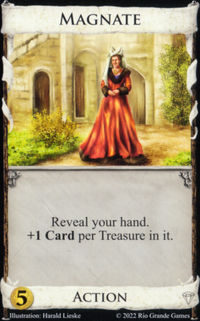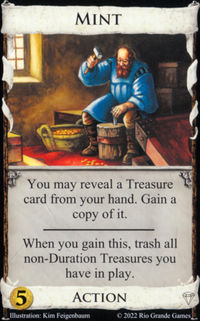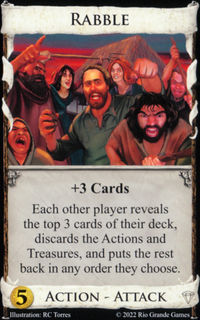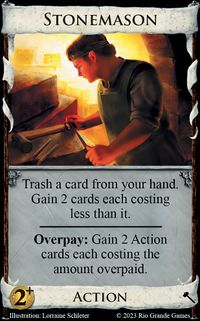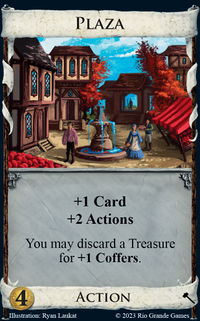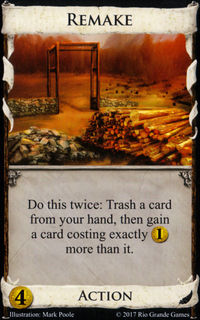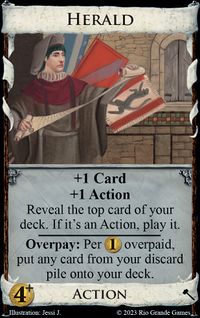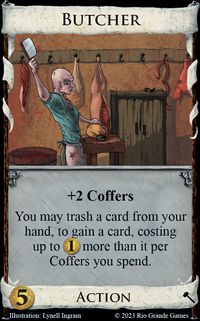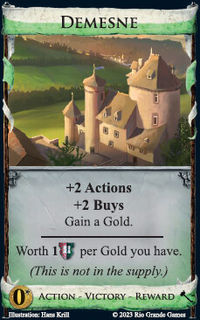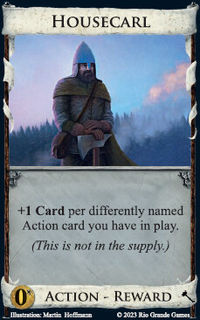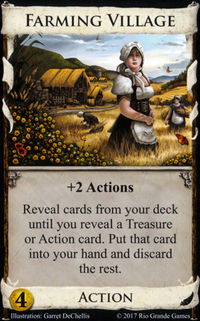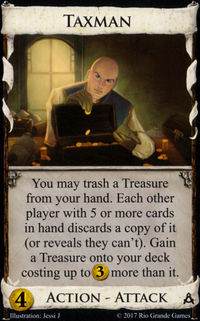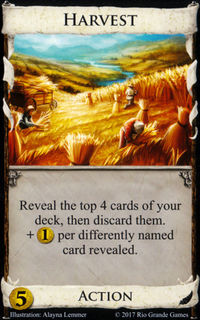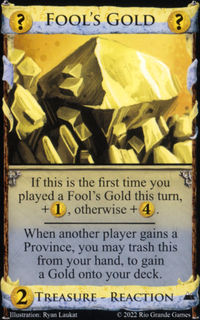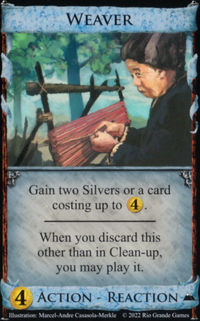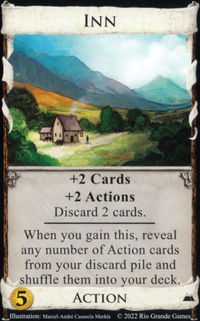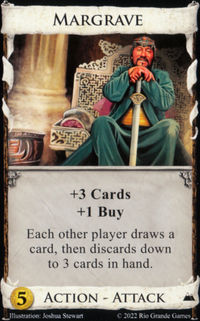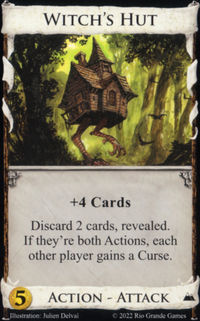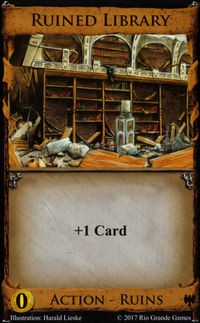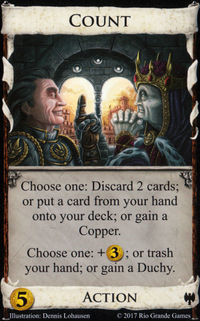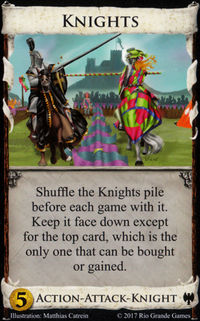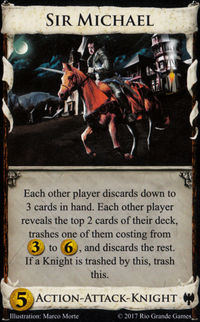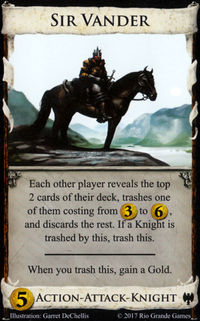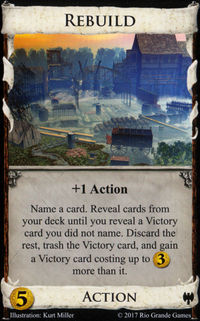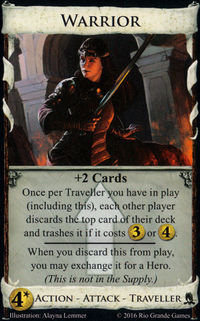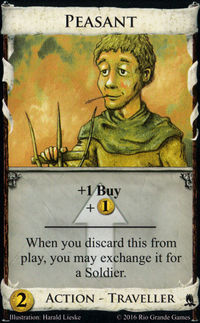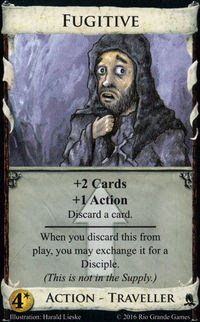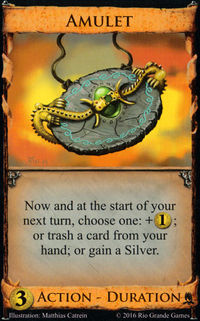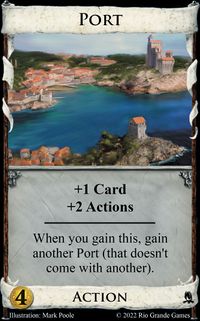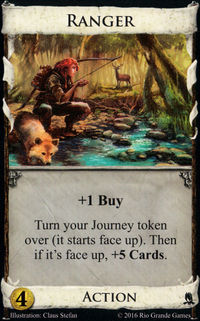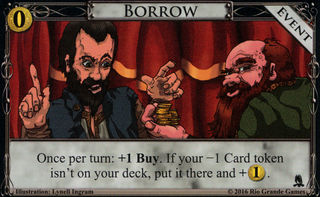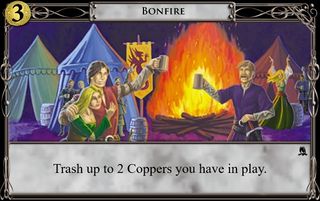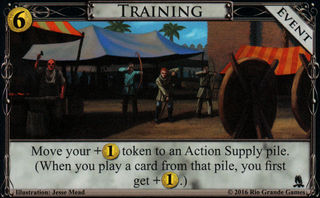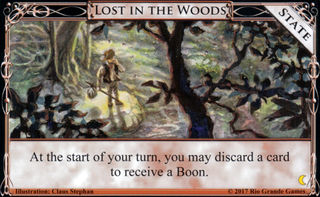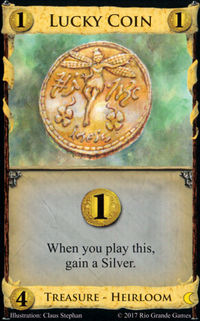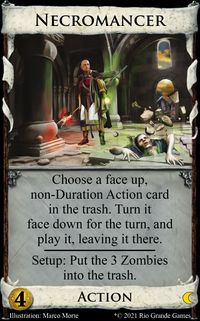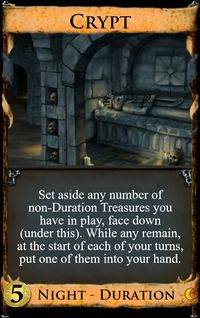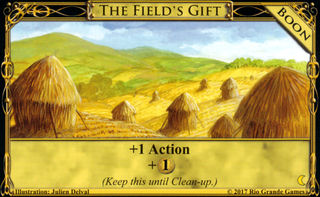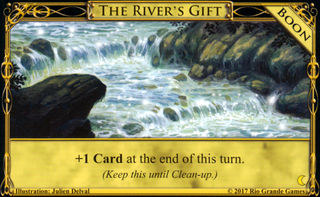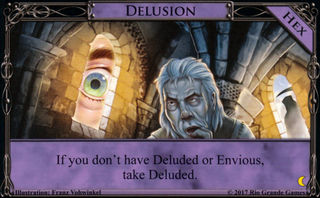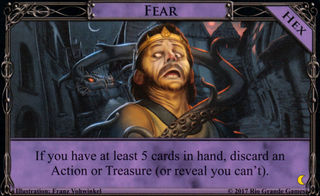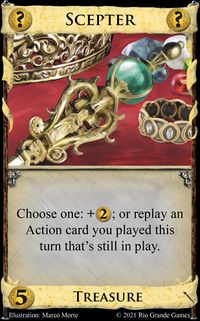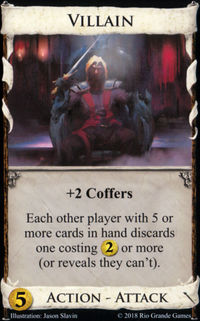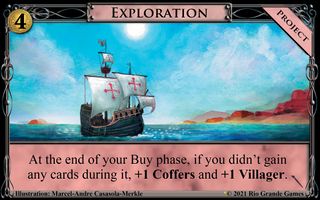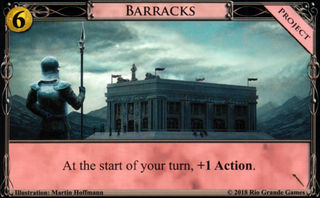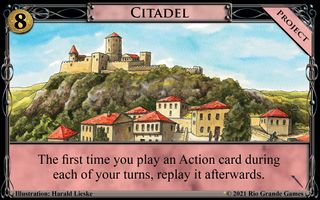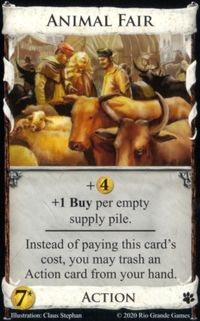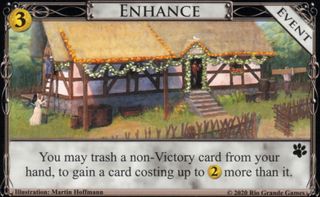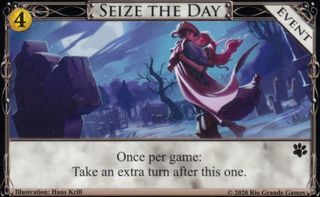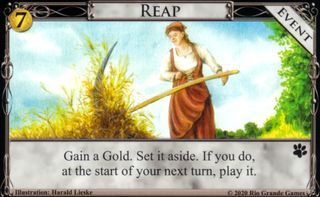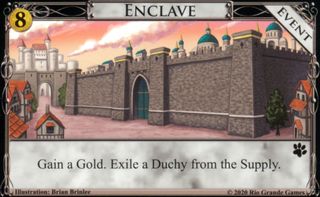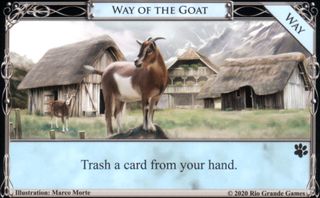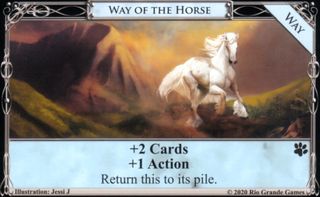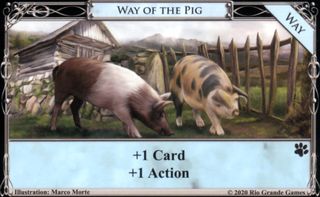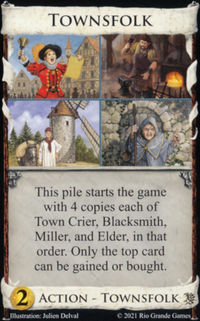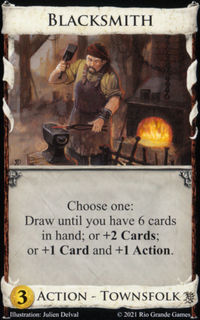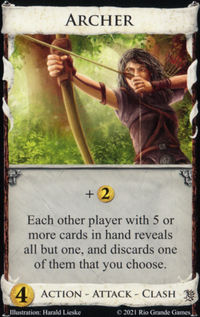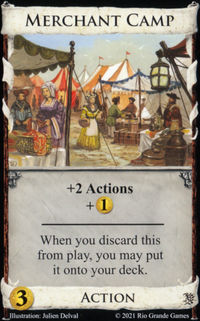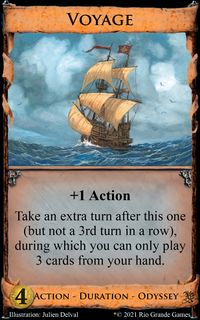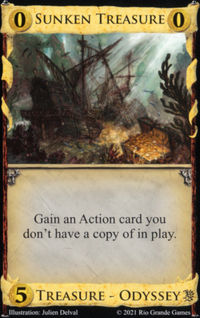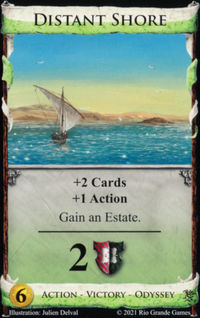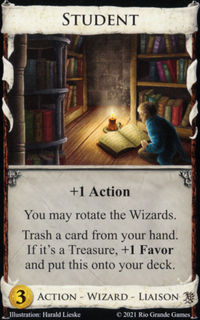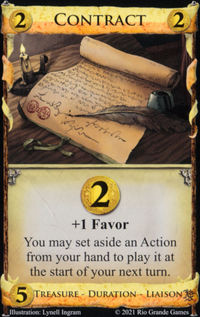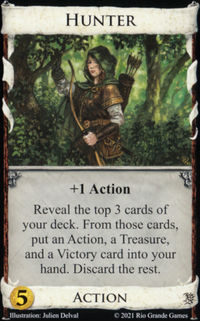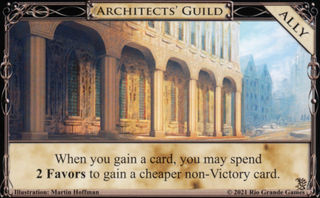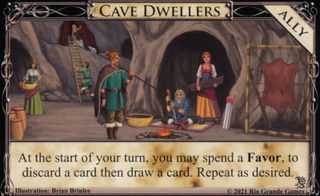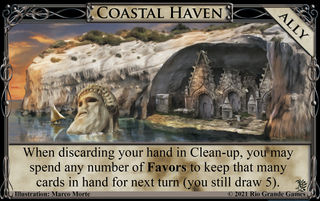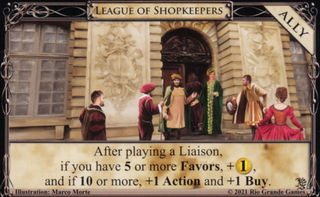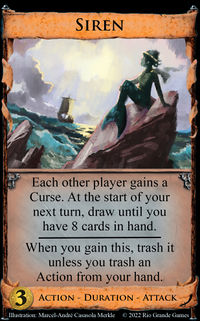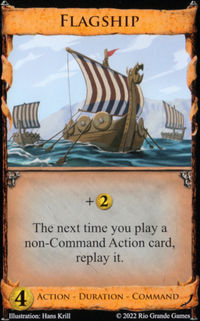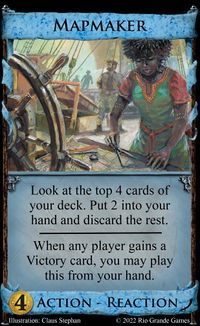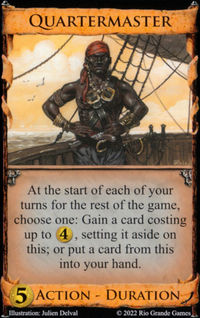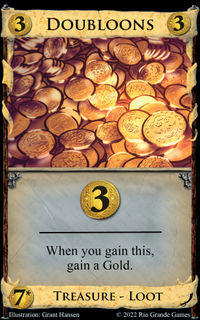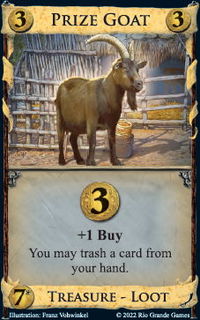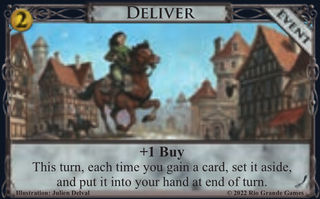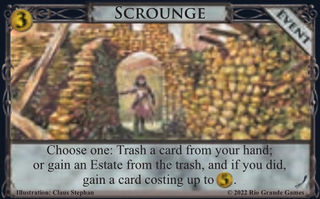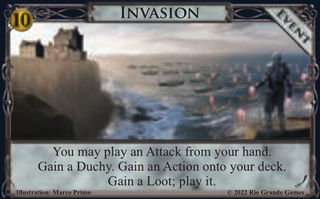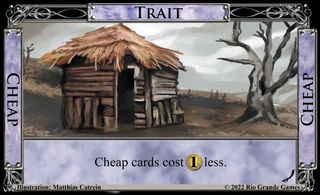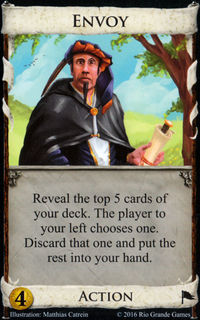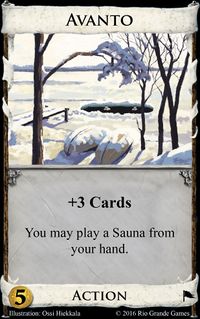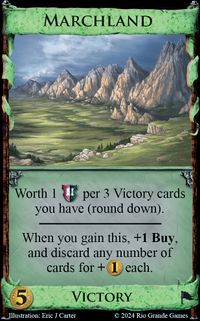Museum
| Museum | |
|---|---|
 | |
| Info | |
| Type | Landmark |
| Set |
Empires |
| Illustrator(s) | Julien Delval |
| Landmark text | |
|
When scoring, 2 | |
Museum is a Landmark from Empires. It rewards players with 2 ![]() for each differently named card in their deck at the end of the game.
for each differently named card in their deck at the end of the game.
Contents |
FAQ
Official FAQ
- Multiple cards from the same pile can score for this as long as they have different names.
Strategy
Museum is a moderately influential Landmark that can somewhat encourage gaining a diverse range of the available cards for the alt-VP it thereby grants. In general, it’s not likely to be worth building a significantly different deck to the one you would otherwise have targeted simply because Museum is present; however, it may influence your choices in the late game, and earlier when certain interacting effects are present.
Towards the end of the game, the 2 ![]() bonus for the first copy of any card your deck still lacks becomes increasingly relevant. In this way, Museum can provide a boost to the value of Duchy (the first one being worth almost as much as a Province) and to various forms of alt-VP (notably Castles). Additionally, it turns otherwise not very useful cards into viable one-time sources of
bonus for the first copy of any card your deck still lacks becomes increasingly relevant. In this way, Museum can provide a boost to the value of Duchy (the first one being worth almost as much as a Province) and to various forms of alt-VP (notably Castles). Additionally, it turns otherwise not very useful cards into viable one-time sources of ![]() in the endgame: for example, a cheap but relatively undesirable non-Victory card such as Beggar may be a better choice than an extra Estate for late-game scoring, especially if you anticipate another shuffle. Even buying Ruins or a Curse can be useful for scoring in endgames with Museum. The importance and timing of these considerations should be modulated by the strength of the available gains or +Buy: the stronger these are, the longer you can delay gaining cards that you want solely or primarily for Museum points—while if they’re lacking or very weak, Museum points are unlikely to be worth spending your gains on at all.
in the endgame: for example, a cheap but relatively undesirable non-Victory card such as Beggar may be a better choice than an extra Estate for late-game scoring, especially if you anticipate another shuffle. Even buying Ruins or a Curse can be useful for scoring in endgames with Museum. The importance and timing of these considerations should be modulated by the strength of the available gains or +Buy: the stronger these are, the longer you can delay gaining cards that you want solely or primarily for Museum points—while if they’re lacking or very weak, Museum points are unlikely to be worth spending your gains on at all.
As well as encouraging you to gain cards you wouldn’t otherwise want, Museum can encourage keeping a single copy of cards that you would normally get rid of (particularly if gains are scarce). This may include junk cards that you would normally prefer to trash (e.g. Copper or Curse), especially if their impact on your deck’s reliability is minimal; Shelters and Heirlooms could also fall into this category, especially if gains are limited or trashing them is cumbersome in any case. Ruins are also a special case here, as there are multiple differently-named cards in the pile, meaning that each of several Ruins could be worth 2 ![]() ; it’s very unlikely that it will be a good idea to deliberately fill your deck with Ruins until the last shuffle, but if this form of junk is already relatively low in impact (e.g. because the draw is very strong), Museum’s presence can reduce the power of a Looter Attack. Similarly, towards the end of the game it can be worth refraining from trashing or returning your last copy of certain one-shot cards (e.g. Spoils, Pixie, or Horse) if you don’t anticipate an opportunity to regain a copy and the 2
; it’s very unlikely that it will be a good idea to deliberately fill your deck with Ruins until the last shuffle, but if this form of junk is already relatively low in impact (e.g. because the draw is very strong), Museum’s presence can reduce the power of a Looter Attack. Similarly, towards the end of the game it can be worth refraining from trashing or returning your last copy of certain one-shot cards (e.g. Spoils, Pixie, or Horse) if you don’t anticipate an opportunity to regain a copy and the 2 ![]() has a better chance of being decisive than the value of the one-shot effect.
has a better chance of being decisive than the value of the one-shot effect.
Museum significantly enhances the strength of Black Market, since everything you buy there is a unique addition to your deck worth 2 ![]() . Given that Black Market is already very strong, it’s likely that making use of this card would be a good choice in any case; but because Museum improves the value of each purchase, it can encourage choosing even a mediocre card from the Black Market over an additional copy of a slightly stronger Supply card. Museum also synergises with Exiling effects, since these allow you to store single,
. Given that Black Market is already very strong, it’s likely that making use of this card would be a good choice in any case; but because Museum improves the value of each purchase, it can encourage choosing even a mediocre card from the Black Market over an additional copy of a slightly stronger Supply card. Museum also synergises with Exiling effects, since these allow you to store single, ![]() -scoring copies of undesirable cards without having them take up space in your deck; those that allow you to put the relevant card directly into Exile (e.g. Camel Train or Transport) can be especially useful.
-scoring copies of undesirable cards without having them take up space in your deck; those that allow you to put the relevant card directly into Exile (e.g. Camel Train or Transport) can be especially useful.
Versions
English versions
| Digital | Text | Release | Date | |
|---|---|---|---|---|
 |
 |
When scoring, 2 |
Empires | June 2016 |
Other language versions
Trivia
Secret History
















